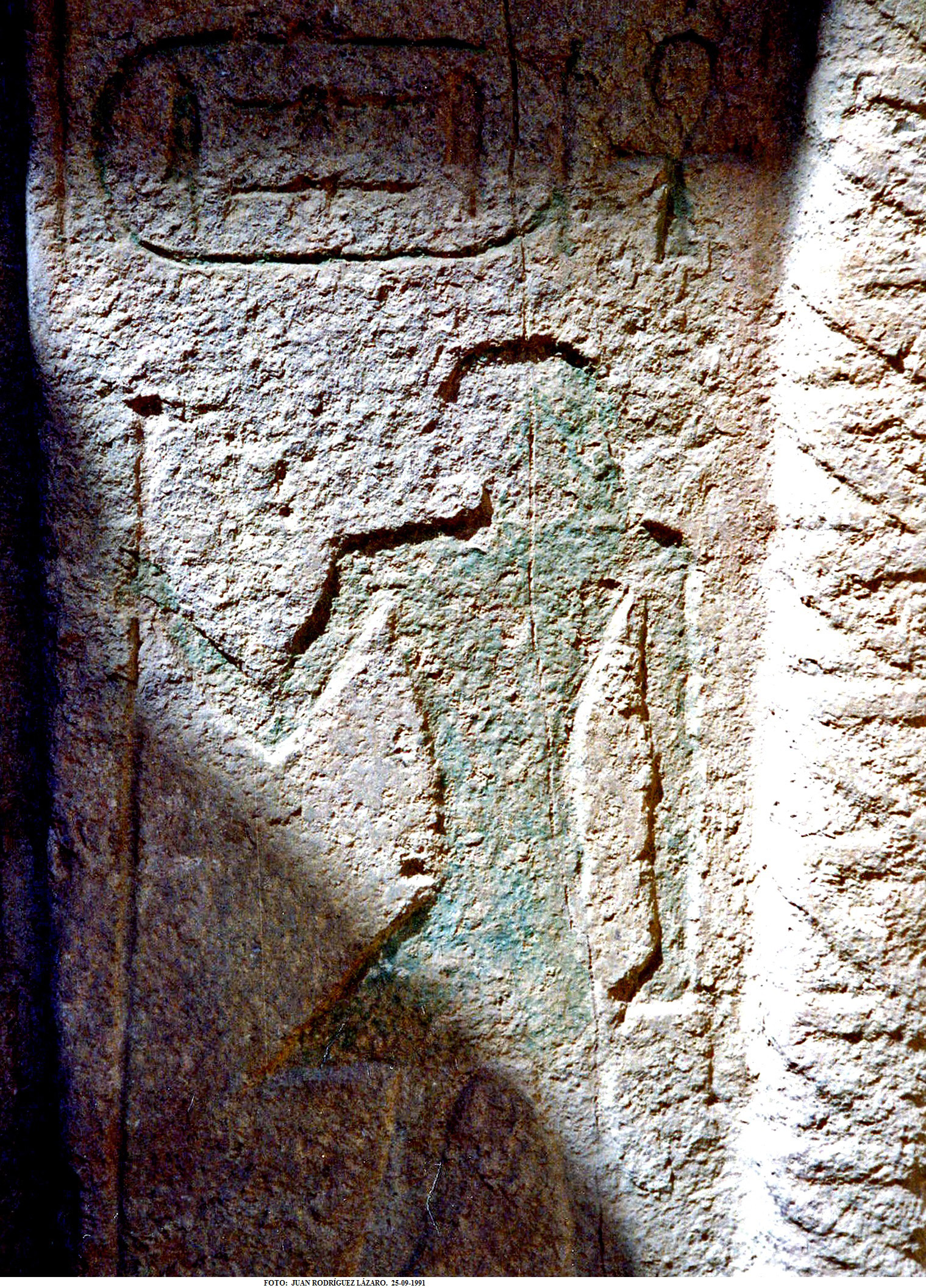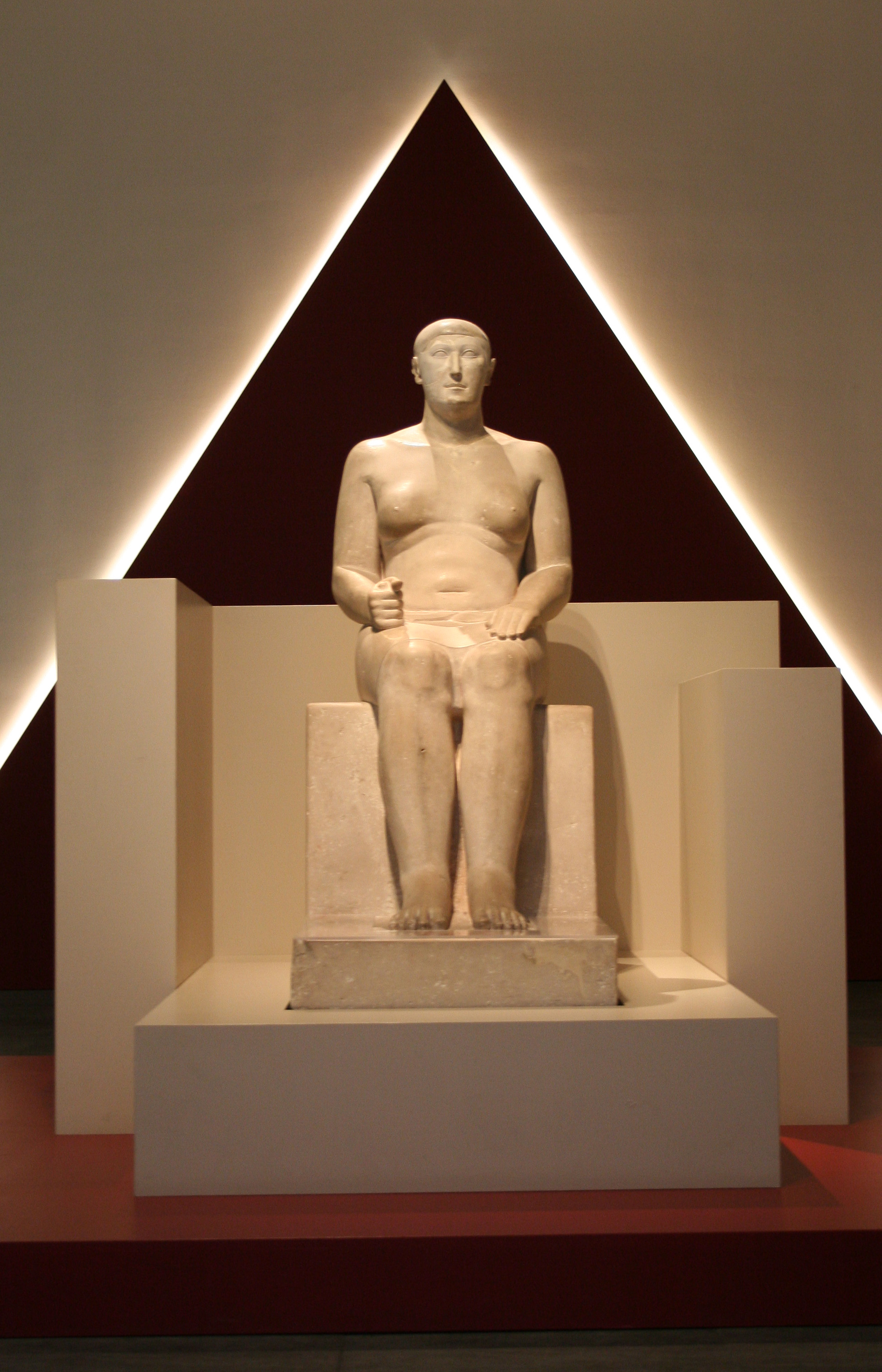|
Seshemnefer (III)
Seshemnefer (also labelled Seshemnefer III) was an ancient Egyptian official of the Fifth Dynasty, most likely under king Djedkare Isesi. At the end of his career he became vizier, the highest office in Ancient Egypt, second only to the king. Seshemnefer was born into an influential family. His father was also called Seshemnefer, his mother Henutsen. The father was ''overseer of the scribes of the king's document'' and ''overseer of all royal works''. Seshemnefer III is mainly known from his mastaba (tomb) at Giza Giza (; sometimes spelled ''Gizah'' arz, الجيزة ' ) is the second-largest city in Egypt after Cairo and fourth-largest city in Africa after Kinshasa, Lagos and Cairo. It is the capital of Giza Governorate with a total population of 9.2 ... (G5170), which was excavated under the direction of Wilhelm Sieglin. The chapel of the mastaba is now in the museum of the University of Tübingen. Seshemnefer's wife, Hetepheres, was priestess of Neith, but also ' ... [...More Info...] [...Related Items...] OR: [Wikipedia] [Google] [Baidu] |
Fifth Dynasty
The Fifth Dynasty of ancient Egypt (notated Dynasty V) is often combined with Dynasties Third Dynasty of Egypt, III, Fourth Dynasty of Egypt, IV and Sixth Dynasty of Egypt, VI under the group title the Old Kingdom of Egypt, Old Kingdom. The Fifth Dynasty pharaohs reigned for approximately 150 years, from the early 25th century BC until the mid 24th century BC. Chronology The Fifth Dynasty of Egypt is a group of nine kings ruling Egypt for approximately 150 years in the 25th century BC, 25th and 24th century BC, 24th centuries BC. The relative succession of kings is not entirely secured as there are contradictions between historical sources and archaeological evidence regarding the reign of the shadowy Shepseskare. Rulers Known rulers in the Fifth Dynasty are listed below. Manetho assigns 248 years of rule to the Fifth Dynasty; however, the pharaohs of this dynasty more probably ruled for approximately 150 years. This estimate varies by both scholar and source. The Horus names a ... [...More Info...] [...Related Items...] OR: [Wikipedia] [Google] [Baidu] |
Djedkare Isesi
Djedkare Isesi (known in Ancient Greek, Greek as Tancheres) was a pharaoh, the eighth and penultimate ruler of the Fifth Dynasty of Egypt in the late 25th century BC, 25th century to mid-24th century BC, during the Old Kingdom of Egypt, Old Kingdom. Djedkare succeeded Menkauhor Kaiu and was in turn succeeded by Unas. His relationship to both of these pharaohs remain uncertain, although it is often conjectured that Unas was Djedkare's son, owing to the smooth transition between the two. Djedkare likely enjoyed a reign of more than 40 years, which heralded a new period in the history of the Old Kingdom. Breaking with a tradition followed by his predecessors since the time of Userkaf, Djedkare did not build a temple to the sun god Ra, possibly reflecting the rise of Osiris in the ancient Egyptian religion, Egyptian pantheon. More significantly, Djedkare effected comprehensive reforms of the Egyptian state administration, the first undertaken since the inception of the system of rank ... [...More Info...] [...Related Items...] OR: [Wikipedia] [Google] [Baidu] |
Vizier (Ancient Egypt)
The vizier () was the highest official in ancient Egypt to serve the pharaoh (king) during the Old, Middle, and New Kingdoms. Vizier is the generally accepted rendering of ancient Egyptian , etc., among Egyptologists. The ''Instruction of Rekhmire'' (''Installation of the Vizier''), a New Kingdom text, defines many of the duties of the , and lays down codes of behavior. The viziers were often appointed by the pharaoh. During the 4th Dynasty and early 5th Dynasty, viziers were exclusively drawn from the royal family; from the period around the reign of Neferirkare Kakai onwards, they were chosen according to loyalty and talent or inherited the position from their fathers. Responsibilities The viziers were appointed by the pharaohs and often belonged to a pharaoh's family. The vizier's paramount duty was to supervise the running of the country, much like a prime minister. At times this included small details such as sampling the city's water supply. All other lesser supervisor ... [...More Info...] [...Related Items...] OR: [Wikipedia] [Google] [Baidu] |
Mastaba
A mastaba (, or ), also mastabah, mastabat or pr- djt (meaning "house of stability", " house of eternity" or "eternal house" in Ancient Egyptian), is a type of ancient Egyptian tomb in the form of a flat-roofed, rectangular structure with inward sloping sides, constructed out of mudbricks. These edifices marked the burial sites of many eminent Egyptians during Egypt's Early Dynastic Period and Old Kingdom. In the Old Kingdom epoch, local kings began to be buried in pyramids instead of in mastabas, although non-royal use of mastabas continued for over a thousand years. Egyptologists call these tombs ''mastaba'', from the Arabic word (maṣṭaba) "stone bench". History The afterlife was important in the religion of ancient Egyptians. Their architecture reflects this, most prominently by the enormous amounts of time and labour involved in building tombs. Ancient Egyptians believed the soul could live only if the body was fed and preserved from corruption and depredation. St ... [...More Info...] [...Related Items...] OR: [Wikipedia] [Google] [Baidu] |
Giza Pyramid Complex
The Giza pyramid complex ( ar, مجمع أهرامات الجيزة), also called the Giza necropolis, is the site on the Giza Plateau in Greater Cairo, Egypt that includes the Great Pyramid of Giza, the Pyramid of Khafre, and the Pyramid of Menkaure, along with their associated pyramid complexes and the Great Sphinx of Giza. All were built during the Fourth Dynasty of the Old Kingdom of Ancient Egypt, between 2600 and 2500 BC. The site also includes several cemeteries and the remains of a workers' village. The site is at the edges of the Western Desert, approximately west of the Nile River in the city of Giza, and about southwest of the city centre of Cairo. Along with nearby Memphis, the site was inscribed on the UNESCO World Heritage List in 1979. The Great Pyramid and the Pyramid of Khafre are the largest pyramids built in ancient Egypt, and they have historically been common as emblems of Ancient Egypt in the Western imagination. They were popularised in Hellenis ... [...More Info...] [...Related Items...] OR: [Wikipedia] [Google] [Baidu] |
Wilhelm Sieglin
Wilhelm may refer to: People and fictional characters * William Charles John Pitcher, costume designer known professionally as "Wilhelm" * Wilhelm (name), a list of people and fictional characters with the given name or surname Other uses * Mount Wilhelm Mount Wilhelm (german: Wilhelmsberg) is the highest mountain in Papua New Guinea at . It is part of the Bismarck Range and the peak is the point where three provinces, Chimbu, Jiwaka and Madang, meet. The peak is also known as ''Enduwa Kombuglu' ..., the highest mountain in Papua New Guinea * Wilhelm Archipelago, Antarctica * Wilhelm (crater), a lunar crater See also * Wilhelm scream, a stock sound effect * SS ''Kaiser Wilhelm II'', or USS ''Agamemnon'', a German steam ship * Wilhelmus, the Dutch national anthem {{Disambiguation ... [...More Info...] [...Related Items...] OR: [Wikipedia] [Google] [Baidu] |
University Of Tübingen
The University of Tübingen, officially the Eberhard Karl University of Tübingen (german: Eberhard Karls Universität Tübingen; la, Universitas Eberhardina Carolina), is a public research university located in the city of Tübingen, Baden-Württemberg, Germany. The University of Tübingen is one of eleven German Excellence Universities. The University of Tübingen is especially known as a centre for the study of plant biology, medicine, law, archeology, ancient cultures, philosophy, theology, and religious studies as well as more recently as center of excellence for artificial intelligence. The university's noted alumni include presidents, EU Commissioners, and judges of the Federal Constitutional Court. The university is associated with eleven Nobel laureates, especially in the fields of medicine and chemistry. History The University of Tübingen was founded in 1477 by Count Eberhard V (Eberhard im Bart, 1445–1496), later the first Duke of Württemberg, a civic ... [...More Info...] [...Related Items...] OR: [Wikipedia] [Google] [Baidu] |
Neith
Neith ( grc-koi, Νηΐθ, a borrowing of the Demotic form egy, nt, likely originally to have been nrt "she is the terrifying one"; Coptic: ⲛⲏⲓⲧ; also spelled Nit, Net, or Neit) was an early ancient Egyptian deity. She was said to be the first and the prime creator, who created the universe and all it contains, and that she governs how it functions. She was the goddess of the cosmos, fate, wisdom, water, rivers, mothers, childbirth, hunting, weaving, and war. Neith was the tutelary deity of Sais ( cop, ⲥⲁⲓ ''Sai'' from Egyptian ''Zau''), where her cult was centered in the western Nile Delta of Lower Egypt. It is attested as early as the First Dynasty. Neith was also one of the three tutelary deities of the southern city of Latopolis ( grc-koi, Λατόπολις) or Esna (Snē) (Sahidic Coptic: from earlier Egyptian: ''t3-snt'', also ''iwnyt'') Latopolis was located on the western bank of the River Nile some south of Luxor (Thebes). Symbolism In her usual ... [...More Info...] [...Related Items...] OR: [Wikipedia] [Google] [Baidu] |
Neferirkare
Neferirkare (sometimes referred to as Neferirkare II because of Neferirkare Kakai) was an ancient Egyptian pharaoh of the Eighth Dynasty during the early First Intermediate Period (2181–2055 BC). According to the egyptologists Kim Ryholt, Jürgen von Beckerath and Darrell Baker he was the 17th and final king of the Eighth Dynasty.Kim Ryholt: "The Late Old Kingdom in the Turin King-list and the Identity of Nitocris", Zeitschrift für ägyptische, 127, 2000, p. 99Darrell D. Baker: The Encyclopedia of the Pharaohs: Volume I - Predynastic to the Twentieth Dynasty 3300–1069 BC, Stacey International, , 2008, p. 260 Jürgen von Beckerath: ''Handbuch der ägyptischen Königsnamen'', Münchner ägyptologische Studien, Heft 49, Mainz : P. von Zabern, 1999, available online see p. 68 Many scholars consider Neferirkare to have been the last pharaoh of the Old Kingdom, which came to an end with the 8th Dynasty. Attestations Neferirkare II's name is clearly attested on the 56th entr ... [...More Info...] [...Related Items...] OR: [Wikipedia] [Google] [Baidu] |
Viziers Of The Fifth Dynasty Of Egypt
A vizier (; ar, وزير, wazīr; fa, وزیر, vazīr), or wazir, is a high-ranking political advisor or minister in the near east. The Abbasid caliphs gave the title ''wazir'' to a minister formerly called ''katib'' (secretary), who was at first merely a helper but afterwards became the representative and successor of the ''dapir'' (official scribe or secretary) of the Sassanian kings. In modern usage, the term has been used for government ministers in much of the Middle East and beyond. Several alternative spellings are used in English, such as ''vizir'', ''wazir'', and ''vezir''. Etymology Vizier is suggested to be an Iranian word, from the Pahlavi root of ''vičir'', which originally had the meaning of a ''decree'', ''mandate'', and ''command'', but later as its use in Dinkard also suggests, came to mean ''judge'' or ''magistrate''. Arthur Jeffery considers the word to be a "good Iranian" word, as has a well-established root in Avestan language. The Pahlavi ''vič ... [...More Info...] [...Related Items...] OR: [Wikipedia] [Google] [Baidu] |
_-_046_(cropped).jpg)




